![]()
![]()
![]()
Use LEFT and RIGHT arrow keys to navigate between flashcards;
Use UP and DOWN arrow keys to flip the card;
H to show hint;
A reads text to speech;
213 Cards in this Set
- Front
- Back
|
A birdseye view is called
|
Plan
|
|
|
A side of shape is called
|
Edge
|
|
|
Angles around a point
|
add to 360 degrees
|
|
|
Angles in a triangle…
|
add to 180 degrees
|
|
|
Angles in quadrilateral…
|
add to 360 degrees
|
|
|
Angles on a straight line
|
add to 180 degrees
|
|
|
Describe what the Surface area of a 3D shape is
|
Area of all the faces added together
|
|
|
Exterior Angles…
|
add to 360 degrees
|
|
|
Formula for the Area of a Parallelogram
|
base x perpendicular height
|
|
|
Formula for the Area of a Rectangle
|
length x width
|
|
|
Formula for the Area of a Trapezium
|
½ (a + b) x perpendicular height
|
|
|
Formula for the Area of a Triangle
|
½ x base x perpendicular height
|
|
|
From what direction do you measure bearings from?
|
North
|
|
|
Length x width gives the area of a:
|
rectangle
|
|
|
More than one corner of a shape are called
|
Vertices
|
|

Name the 2D Shape
|
Hexagon
|
|
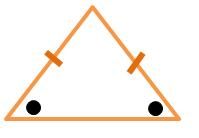
Name the 2D Shape
|
Isosceles Triangle
|
|
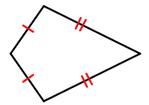
Name the 2D shape
|
Kite
|
|

Name the 2D Shape
|
Octagon
|
|

Name the 2D Shape
|
Parallelogram
|
|

Name the 2D Shape
|
Pentagon
|
|
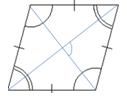
Name the 2D Shape
|
Rhombus
|
|

Name the 2D Shape
|
Square
|
|

Name the 2D Shape
|
Trapezium
|
|

Name the 3D Shape
|
Cuboid
|
|

Name the 3D Shape
|
Triangular Prism
|
|
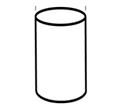
Name the 3D Shape
|
Cylinder
|
|

Name the 3D Shape
|
Sphere
|
|
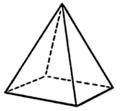
Name the 3D Shape
|
Square-Based Pyramid
|
|
|
One corner of a Shape is called
|
Vertex
|
|
|
Pythagoras' formula:
|

for any right angled triangle
|
|
|
The general name for any 2D shapes
|
Polygon
|
|
|
The view from front or side of a 3d shape is called
|
Elevation
|
|
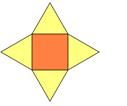
This picture shows a:
|
Net
|
|

This shape has rotational symmetry of:
|
Order 3
|
|
|
Volume of a Prism
|
Cross Section x Length
|
|

What Angle Rule?
|
Base angles in an isosceles triangle are equal
|
|
|
What are the Right Angled Trigonometry Formulae?
|
SOH CAH TOA
|
|
|
What does congruency mean?
|
Exactly the Same
|
|
|
What is the sine rule for the area of a triangle?
|
1/2absinC
|
|

What key word describes this pattern?
|
Tessellation
|
|

What type of lines?
|
Parallel
|
|
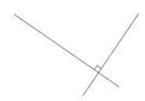
What type of lines
|
Perpendicular
|
|
|
What’s a ‘Plan’ of a shape?
|
Birdseye View
|
|
|
When do you use the cosine rule/formula?
|
When a non-right angled triangle has 3 sides and an angle one of which you are working out.
|
|
|
When do you use the sine rule/formula?
|
When a non-right angled triangle has sides and 2 angles one of which you are working out.
|
|
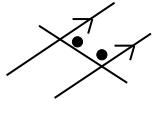
Which Angle Fact?
|
Allied angles add to 180 degrees
|
|

Which Angle Fact
|
Alternate Angles are Equal
|
|

Which Angle Fact?
|
Corresponding Angles are Equal
|
|

Which angle fact?
(www.tannermaths.co.uk) |
vertically opposite angles are equal
|
|
|
Which direction to you measure bearings?
(www.tannermaths.co.uk) |
Clockwise
|
|
|
½ (a + b) x perpendicular height gives the area of a
(www.tannermaths.co.uk) |
trapezium
|
|
|
½ x base x perpendicular height gives the area of a
(www.tannermaths.co.uk) |
triangle
|
|
|
A tangent meets a radius at 90 degrees (picture how it looks in your head)
(www.tannermaths.co.uk) |
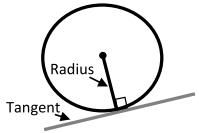
|
|
|
Angles in the same segment are equal (picture how it looks in your head)
(www.tannermaths.co.uk) |
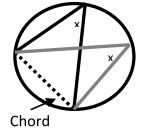
|
|
|
Area of a Circle is given by the formula
(www.tannermaths.co.uk) |

|
|
|
Chord
(www.tannermaths.co.uk) |
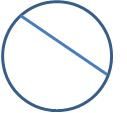
|
|
|
Circumference of a Circle is given by the formula
(www.tannermaths.co.uk) |
πd
|
|
|
Describe the alternate segment theorem in detail.
(www.tannermaths.co.uk) |
The angle between a tangent and a chord is equal to any angle on the circumference that stands on that chord.
|
|
|
Diameter
(www.tannermaths.co.uk) |
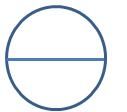
|
|
|
is the formula for the
(www.tannermaths.co.uk) |
area of a circle
|
|
|
Opposite angles in a cyclic quadrilateral are equal (picture how it looks in your head)
(www.tannermaths.co.uk) |

|
|
|
Part of the circumference is called an:
(www.tannermaths.co.uk) |
Arc
|
|
|
Radius
(www.tannermaths.co.uk) |

|
|
|
Sector
(www.tannermaths.co.uk) |
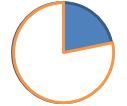
|
|
|
Segment
(www.tannermaths.co.uk) |
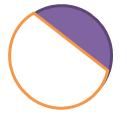
|
|
|
Tangent
(www.tannermaths.co.uk) |

|
|
|
The Alternate Segment Theorem (picture how it looks in your head)
(www.tannermaths.co.uk) |
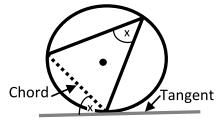
|
|
|
The angle at the centre is twice the angle at the circumference (picture how it looks in your head)
(www.tannermaths.co.uk) |
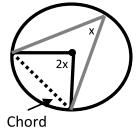
|
|
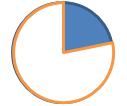
The shaded part is called
(www.tannermaths.co.uk) |
Sector
|
|

The shaded part is called
(www.tannermaths.co.uk) |
Segment
|
|
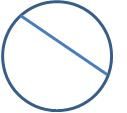
This line is called
(www.tannermaths.co.uk) |
Chord
|
|
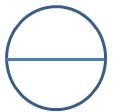
This line is called
(www.tannermaths.co.uk) |
Diameter
|
|

This line is called
(www.tannermaths.co.uk) |
Radius
|
|

This line is called
(www.tannermaths.co.uk) |
Tangent
|
|
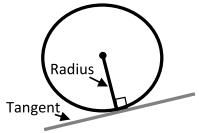
Which circle theorem?
(www.tannermaths.co.uk) |
A tangent meets a radius at 90 degrees
|
|
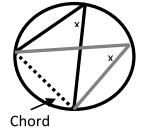
Which circle theorem?
(www.tannermaths.co.uk) |
Angles in the same segment are equal
|
|

Which circle theorem?
(www.tannermaths.co.uk) |
Opposite angles in a cyclic quadrilateral are equal
|
|
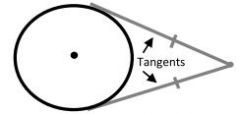
Which circle theorem?
(www.tannermaths.co.uk) |
Tangents from an external point are equal in length.
|
|
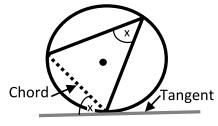
Which circle theorem?
(www.tannermaths.co.uk) |
The Alternate Segement Theorem
|
|

Which circle theorem?
(www.tannermaths.co.uk) |
The angle at the centre is twice the angle at the circumference
|
|
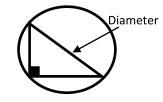
Which circle theorem?
(www.tannermaths.co.uk) |
The angle in a semi-circle is a right angle
|
|
|
πd is the formula for the
(www.tannermaths.co.uk) |
circumference
|
|
|
1 foot into a metric measurement
(www.tannermaths.co.uk) |
30 cm
|
|
|
1 gallon to a metric measurement
(www.tannermaths.co.uk) |
4.5 litres
|
|
|
1 inch into cm
(www.tannermaths.co.uk) |
2.5
|
|
|
1 kg into an imperial measurement
(www.tannermaths.co.uk) |
2.2 pounds
|
|
|
1 litre into an imperial measurement
(www.tannermaths.co.uk) |
1.75 pints
|
|
|
1 litre is how many ml?
(www.tannermaths.co.uk) |
1000
|
|
|
1.75 pints into a metric measurement
(www.tannermaths.co.uk) |
1 litre
|
|
|
1000m into kilometres
(www.tannermaths.co.uk) |
1
|
|
|
10mm into cm
(www.tannermaths.co.uk) |
1
|
|
|
2.2 pounds into a metric measurement
(www.tannermaths.co.uk) |
1 kilogram
|
|
|
4.5 litres into an imperial measurement
(www.tannermaths.co.uk) |
1 gallon
|
|
|
5 miles into a metric measurement
(www.tannermaths.co.uk) |
8 kilometres
|
|
|
8 Kilometres into an imperial measurement
(www.tannermaths.co.uk) |
5 Miles
|
|
|
Examples of Imperial Measurements
(www.tannermaths.co.uk) |
Pint, Yard, Gallon, Mile, Inch, Feet, Ounces
|
|
|
Examples of Metric Measurements
(www.tannermaths.co.uk) |
Kilometre, Metre, Centimetre, Millitres, Litre, Kilogram, Gram
|
|
|
How many cm in a metre?
(www.tannermaths.co.uk) |
100
|
|
|
How many inches in 1 metre?
(www.tannermaths.co.uk) |
39
|
|
|
How do you calculate the Frequency Density of a histogram?
(www.tannermaths.co.uk) |
Frequency ÷ Class Width
|
|
|
How do you calculate the Frequency of a histogram?
(www.tannermaths.co.uk) |
Frequency Density x Class Width
|
|
|
How do you find the probability of something AND something else
(www.tannermaths.co.uk) |
Multiply the Probabilities
|
|
|
How do you find the probability of something OR something else
(www.tannermaths.co.uk) |
Add the Probabilities
|
|
|
If the probability of you getting a C is 19/20. What is the probability of you not getting a C?
(www.tannermaths.co.uk) |
1/20
|
|
|
In a pie chart angles add to
(www.tannermaths.co.uk) |
360 degrees
|
|
|
Interquartile Range is
(www.tannermaths.co.uk) |
Upper Quartile - Lower Quartile
|
|
|
Probabilities add up to:
(www.tannermaths.co.uk) |
1
|
|
|
The mean of 2, 5, 3, 4, 6
(www.tannermaths.co.uk) |
4
|
|
|
The median of 2, 6, 7, 3, 7
(www.tannermaths.co.uk) |
6
|
|
|
The mode of 5, 5, 6, 7, 9
(www.tannermaths.co.uk) |
5
|
|
|
The range of 1, 6, 7, 10, 8
(www.tannermaths.co.uk) |
9
|
|

What Correlation?
(www.tannermaths.co.uk) |
Negative
|
|

What Correlation?
(www.tannermaths.co.uk) |
No
|
|
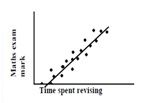
What Correlation?
(www.tannermaths.co.uk) |
Positive
|
|
|
What is a Data Collection Sheet?
(www.tannermaths.co.uk) |
Tally Chart/Frequency Table
|
|
|
How do you find the gradient from two points on a line?
(www.tannermaths.co.uk) |
Change in the y direction ÷ change in x direction
|
|
|
If two lines are parallel then their gradients are
(www.tannermaths.co.uk) |
The same
|
|
|
If two lines are perpendicular then their gradients are
(www.tannermaths.co.uk) |
The ‘negative reciprocal’
|
|
|
In y=mx+c what does c represent?
(www.tannermaths.co.uk) |
Y - Intercept
|
|
|
In y=mx+c what does m represent?
(www.tannermaths.co.uk) |
Gradient
|
|
|
Name the four types of Transformation
(www.tannermaths.co.uk) |
Enlargement, Rotation, Reflection, Translation
|
|
|
To describe a reflection you need to state:
(www.tannermaths.co.uk) |
Reflection
Line of Reflection |
|
|
To describe a rotation you need to state:
(www.tannermaths.co.uk) |
Rotation
Centre Angle and Direction |
|
|
To describe a translation you need to state:
(www.tannermaths.co.uk) |
Translation
Vector |
|
|
To describe an enlargement you need to state:
(www.tannermaths.co.uk) |
Enlargement
Centre Scale Factor |
|
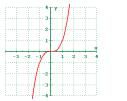
Type of Graph
(www.tannermaths.co.uk) |
Cubic
|
|
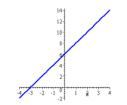
Type of Graph
(www.tannermaths.co.uk) |
Linear Graph
|
|
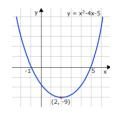
Type of Graph
(www.tannermaths.co.uk) |
Quadratic
|
|
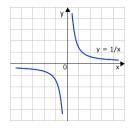
Type of Graph
(www.tannermaths.co.uk) |
Reciprocal
|
|
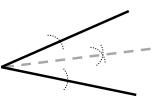
What Construction?
(www.tannermaths.co.uk) |
Angle Bisector
|
|
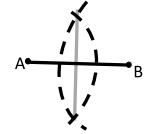
What Construction?
(www.tannermaths.co.uk) |
Perpendicular Bisector
|
|
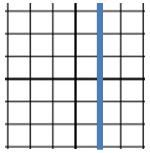
What is the equation of this graph?
(www.tannermaths.co.uk) |
x=1
|
|
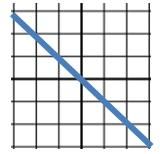
What is the equation of this graph?
(www.tannermaths.co.uk) |
y=-x
|
|
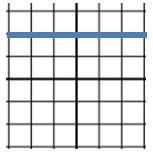
What is the equation of this graph?
(www.tannermaths.co.uk) |
y=2
|
|
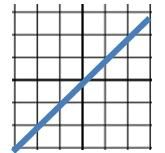
What is the equation of this graph?
(www.tannermaths.co.uk) |
y=x
|
|
|
What is the Origin?
(www.tannermaths.co.uk) |
The co-ordinate (0,0)
|
|

in ordinary form
(www.tannermaths.co.uk) |
0.0025
|
|

(www.tannermaths.co.uk)
|
67800
|
|

(www.tannermaths.co.uk)
|
2
|
|

(www.tannermaths.co.uk)
|
2 x 2 x 2 = 8
|
|

(www.tannermaths.co.uk)
|
6
|
|
|
-10 ÷ 2
(www.tannermaths.co.uk) |
-5
|
|
|
-3 x 2
(www.tannermaths.co.uk) |
-6
|
|
|
-4 x -3
(www.tannermaths.co.uk) |
12
|
|
|
-4 – 3
(www.tannermaths.co.uk) |
-7
|
|
|
0.3 as a fraction
(www.tannermaths.co.uk) |
3/10
|
|
|
0.6 as a %
(www.tannermaths.co.uk) |
60%
|
|
|
1/3 as a decimal
(www.tannermaths.co.uk) |

|
|
|
1/4 as a decimal
(www.tannermaths.co.uk) |
0.25
|
|
|
10% or 80
(www.tannermaths.co.uk) |
8
|
|
|
25% or 200
(www.tannermaths.co.uk) |
50
|
|
|
3 + 5 x 3
(www.tannermaths.co.uk) |
18
|
|
|
3/4 as a percentage
(www.tannermaths.co.uk) |
75%
|
|
|
40% or 600
(www.tannermaths.co.uk) |
240
|
|
|
7/10 as a decimal
(www.tannermaths.co.uk) |
0.7
|
|
|
75% as a fraction
(www.tannermaths.co.uk) |
3/4
|
|
|
Cube of 3
(www.tannermaths.co.uk) |
3 x 3 x 3 =27
|
|
|
Cube root of 125
(www.tannermaths.co.uk) |
5
|
|
|
Factors of 20
(www.tannermaths.co.uk) |
1, 2, 4, 5, 10, 20
|
|
|
Find 2/5 of 25
(www.tannermaths.co.uk) |
10
|
|
|
Find 3/4 of 28
(www.tannermaths.co.uk) |
21
|
|
|
Highest Common Factor of 12 and 8
(www.tannermaths.co.uk) |
4
|
|
|
Lowest Common Multiple of 12 and 8
(www.tannermaths.co.uk) |
24
|
|
|
Name the First 5 Square Numbers
(www.tannermaths.co.uk) |
1, 4, 9, 16, 25
|
|
|
Round 0.05457 to 1sf
(www.tannermaths.co.uk) |
0.05
|
|
|
Round 2.3457 to 2sf
(www.tannermaths.co.uk) |
2.3
|
|
|
Round 3456 to 2sf
(www.tannermaths.co.uk) |
3500
|
|
|
Round 56.789 to 2 decimal places
(www.tannermaths.co.uk) |
56.79
|
|
|
Simplify 30:20
(www.tannermaths.co.uk) |
3:2
|
|
|
Square of 9
(www.tannermaths.co.uk) |
81
|
|
|
The first 5 multiples of 7
(www.tannermaths.co.uk) |
7, 14, 21, 28, 35
|
|
|
The first five prime numbers
(www.tannermaths.co.uk) |
2, 3, 5, 7, 11
|
|
|
The lower bound of 6.74 rounded to 2dp
(www.tannermaths.co.uk) |
6.735
|
|
|
The upper bound of 5.6 rounded to 1dp
(www.tannermaths.co.uk) |
5.65
|
|
|
To decrease by 15% multiply by
(www.tannermaths.co.uk) |
0.85
|
|
|
To decrease by 5% multiply by
(www.tannermaths.co.uk) |
0.95
|
|
|
To increase by 15% multiply by
(www.tannermaths.co.uk) |
1.15
|
|
|
To increase by 5% multiply by
(www.tannermaths.co.uk) |
1.05
|
|
|
What is Compound Interest?
(www.tannermaths.co.uk) |
Finding the interest of the new amount each year
|
|
|
What is Simple Interest?
(www.tannermaths.co.uk) |
The same amount of interest every year
|
|

Work out:
(www.tannermaths.co.uk) |

|
|

Work out:
(www.tannermaths.co.uk) |

|
|

Work out:
(www.tannermaths.co.uk) |
1
|
|

Work out:
(www.tannermaths.co.uk) |

|
|

Work out:
(www.tannermaths.co.uk) |

|
|

Work out:
(www.tannermaths.co.uk) |
1/3
|
|
|
Write 0.0007 in standard form
(www.tannermaths.co.uk) |

|
|
|
Write 0.0085 in standard form
(www.tannermaths.co.uk) |

|
|
|
Write 360000 in standard form
(www.tannermaths.co.uk) |

|
|
|
Write 5780000 in standard form
(www.tannermaths.co.uk) |

|
|
|
2m x 3
(www.tannermaths.co.uk) |
6m
|
|
|
4y(2y+x)
(www.tannermaths.co.uk) |

|
|
|
Expand 2(x+3)
(www.tannermaths.co.uk) |
2x+6
|
|
|
Expand 3(x-7)
(www.tannermaths.co.uk) |
3x-21
|
|
|
Factorise
(www.tannermaths.co.uk) |
3x(x+2)
|
|

Factorise
(www.tannermaths.co.uk) |
y(y+4)
|
|
|
Factorise 4x+8
(www.tannermaths.co.uk) |
4(x+2)
|
|
|
Make y the subject of
x = y+7 (www.tannermaths.co.uk) |
y = x - 7
|
|
|
P + P + P - P
(www.tannermaths.co.uk) |
2p
|
|
|
p x p x p x p
(www.tannermaths.co.uk) |

|
|
|
The first 3 integers that satisfy x > 9
(www.tannermaths.co.uk) |
10, 11, 12
|
|
|
The first 3 integers that satisfy y ≤ 9
(www.tannermaths.co.uk) |
9, 8, 7
|
|

What does this represent?
(www.tannermaths.co.uk) |
-1< x ≤4
|
|
|
What does this say:
-2 ≤ x < 6 (www.tannermaths.co.uk) |
x is greater than or equal -2 but less than 6
|
|
|
What does this say:
3 < x ≤ 8 (www.tannermaths.co.uk) |
x is greater than 3 but less than or equal to 8
|
|

Work out
(www.tannermaths.co.uk) |
1
|
|

Write in a different form
(www.tannermaths.co.uk) |

|
|

Write in a different form
(www.tannermaths.co.uk) |

|
|

Write in a different form
(www.tannermaths.co.uk) |

|
|

Write in a different form
(www.tannermaths.co.uk) |

|
|
|
y + y + y
(www.tannermaths.co.uk) |
3y
|
|

Work out:
(www.tannermaths.co.uk) |

|

